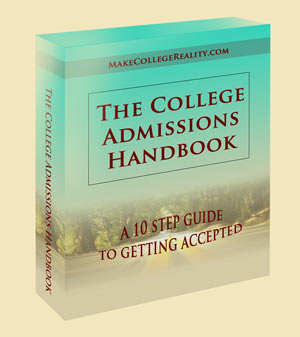 Where there’s a will there’s a way, and college can be affordable for anyone if you make good decisions like applying for financial aid early and knowing how much debt you can handle. In fact, the less money your parents make, the more aid you’re eligible for. So don’t let the big price tag stop you.
Where there’s a will there’s a way, and college can be affordable for anyone if you make good decisions like applying for financial aid early and knowing how much debt you can handle. In fact, the less money your parents make, the more aid you’re eligible for. So don’t let the big price tag stop you.
Financial aid. A few hours of work could get you thousands of dollars in aid. You could receive a grant, low interest loans, work study, or a combination of the three.
Receiving grant money is like getting your college tuition on sale – you never have to pay that money back. If you qualify for federal student loans, you might get an interest rate so low that the government is actually losing money by lending to you. Plus, you won’t have to start making payments until at least 6 months after you graduate. If you get a work study job, you’ll have the opportunity to work right on campus.
>>8 steps to applying for financial aid
Scholarships. A lot of people don’t realize how much money they can actually get from scholarships. There’s plenty of money to go around for all sorts of people. You don’t even have to qualify for financial aid or have stellar grades to be eligible.
>>9 things you need to know about scholarships
>>Check out FastWeb to start your scholarship search
Free money from schools. Some schools have scholarships that you don’t apply for. You won’t find out you’ve been awarded a scholarship until you receive your acceptance letter. You could get anything from a few hundred dollars to full tuition. If you are lucky enough to get some of this “free money,” you’ll probably get the most from your safety schools. Your best shot at getting any money is to get good grades and be involved in activities.
Payment plans. If you still can’t get all your expenses covered, you can use a payment plan. Schools will often require the bill to be paid in full at the beginning of each semester. Unless you or your parents have a secret stash, it’ll probably be hard to come up with that kind of money twice a year. Payment plans divide your bill so you pay it over the course of 3 to 12 months instead of all at once. It’s not a loan, so you don’t pay any interest. It’s just an easier way to manage your money.
A popular payment plan to use is Sallie Mae. For the best rates, you should sign up by March if you’re enrolling in the fall.
Private student loans. If you can’t afford the rest of tuition even with a payment plan, you could take out private student loans. You won’t get a low interest rate or long grace period like you will with your financial aid package, but it is a good option if you can’t pay the rest out of pocket.
>>One place you can find student loans is SimpleTuition
Working. It would be ideal if you could focus 100% of your energy on your schoolwork, but more than likely that won’t be the case. Even in the best case scenario where you have tuition, room and board, and books paid for, you’ll still want some extra cash to be able to go out once in a while.
Community college. If you do it right, community college can save you thousands. You have to make sure you have an idea of the schools you'd like to attend so you can take courses that will transfer. Even if you don't start out at a community college, you could still take summer courses there to get ahead and possibly graduate early.
>>Community college to four-year institution: what you need to know
Tax credits. The federal government offers several programs to help families pay for college. You'll still have to find a way to pay the tuition bill throughout the year, but when you or your parents do taxes in the spring, you could get some money back. Check out this article for more information on tax credits.
If you miss financial aid deadlines, you can always take out private loans for that year. Starting early and getting everything in on time will give you the best chance of getting the most free money. The question is not if you will be able to pay for college, but how.
>>8 steps to applying for financial aid
>>Choosing financial aid packages: Not all are created equal
Prepare
Apply
Before you start
Choosing a college
Recommendations
Essays
Paying for college
Succeed


